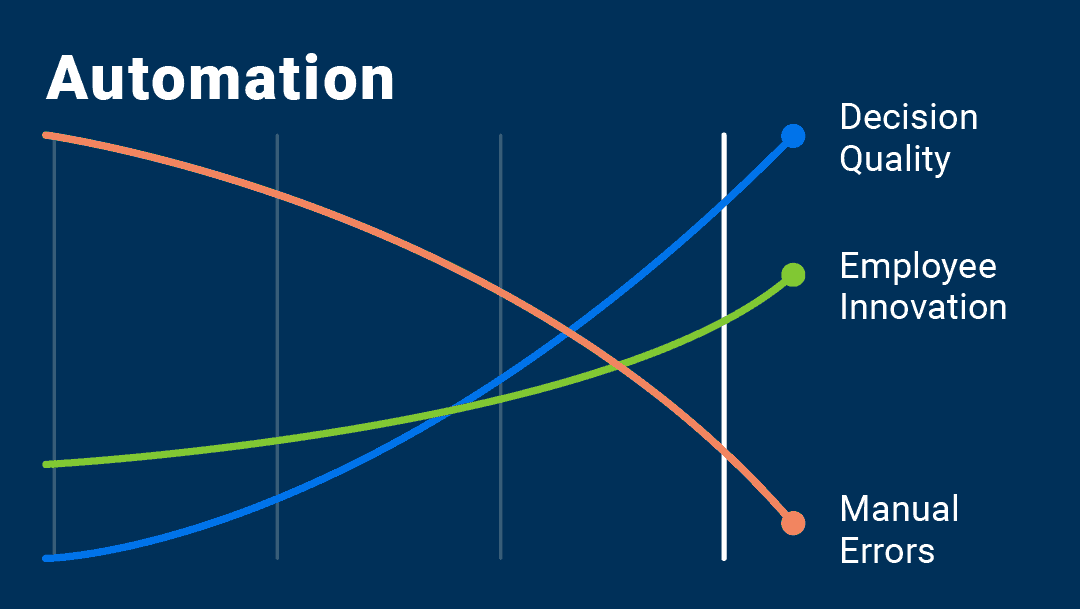The short-term benefits of automating repetitive, manual workflows are well known: saving time, saving money, and increasing efficiency. But there are lesser-known, long-term benefits of automation, too, and they can have a profound and lasting effect on the success of your business. Here are three ways in which automating processes can transform your business for the long haul.
1. Focus Employees on Innovation
One benefit of automation that’s often overlooked is the ability to free up time for employees to focus on innovation by automating manual, repetitive tasks.
More than 40% of information workers said they spend at least a quarter of their work week on manual, repetitive tasks; 59% say they could save six or more hours a week if those tasks were automated, according to the Smartsheet Automation in the Workplace Report.
Related
3 Things Keeping Your Team From Innovating
Over 75% of respondents said automation will free up time for more interesting, valuable assignments — work they are eager to tackle. Imagine what employees could use those six hours for if low-level tasks were taken off their plates.
Related
How Automation Can Lead to Innovation
With a work execution platform, any business user can easily set up simple automation rules to get reminders before tasks are due, prompt teams to provide updates, and automate repetitive actions like approval requests.
This not only allows your employees to do better work, more efficiently, but it can also result in increased job satisfaction and lower employee turnover, as the time saved is shifted to more meaningful, satisfying work — including innovative projects and initiatives. This can also translate into reduced costs for recruiting, operations and administration, as well as long term gains in productivity.
2. Reduce Risk
Automation can also lead to greater accountability and fewer errors, improving accuracy and reducing risk for your organization. By automatically capturing information and tracking changes to information, employees eliminate errors caused by data entry, and can even see when information was added or when changes were made and by whom.
Related
Connect Critical Enterprise Systems to Smartsheet With Data Uploader
Smartsheet forms provide employees a way to collect error-free, consistent, and organized data from anyone via desktop, laptop, tablet, or mobile phone. Workers can quickly and easily create and customize forms using a simple form builder. By automating data intake in this way, workers reduce the risk of human error.
Once the information is captured in Smartsheet, employees and other stakeholders can easily collaborate, review, and analyze information and take immediate action, reducing costly delays and version-control issues.
Another way to automatically capture data is by using automated update requests and automated approval requests to track updates to projects and approvals of projects, tasks, or anything else that requires sign-off in Smartsheet. Automatically capturing approvals ensures that everyone is on the same page about a decision and can track the latest changes made to a project.
3. Make Better Decisions
When information is automatically captured and saved to one place, everyone has easy access to accurate, real-time information. This, in turn, enables employees at any level to make better decisions, faster, and gives your organization unprecedented accuracy and agility.
Once information is entered, captured, or imported into Smartsheet you and your team can automatically pull information into dashboards or portals to surface key metrics and milestones for stakeholders, including executives.
Related
The 3 Most Important Dashboards for Executive Visibility
Automated reporting provides accurate, real-time information for executives and other decision makers to make better decisions, faster, without having to worry about outdated slide decks and delayed reporting.
Downstream Effects Drive Business Value
Though the immediate benefits of automation — time and money saved — are significant, these three downstream effects are what drives the real business value of automation: increasing the speed and accuracy of decision-making, reducing risk for your organization, and empowering workers with the time and space they need to innovate.
Read more about automated workflows.


